A Look Inside the Pre-K Classrooms of Two Golden Apple Finalists
05 March 2021
Congratulations to Ms. Faherty and Ms. Loesch!
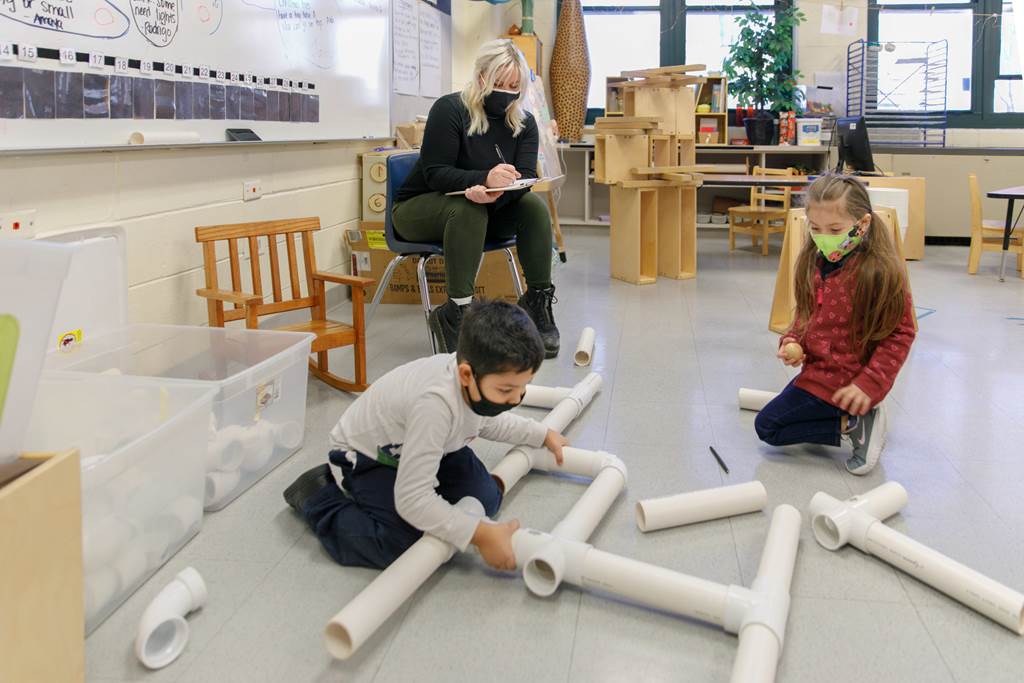
A women and children’s home in Thailand is where Ms. Megan Faherty says she discovered what young students are truly capable of. From climbing trees to get jackfruit to preparing meals and taking care of their even younger siblings, the three- and four-year-olds she was working with would surprise her almost on a daily basis.
Now, as a pre-k teacher at Schubert Elementary in Belmont Cragin, allowing students to reach their full potential by letting them lead their own learning is the backbone of her instruction. This means that no two years in her classroom look the same. If students share that they want to learn about insects, that is what will be incorporated into their lessons. Last year, students wanted to learn about painting and murals. Right now, the focus is engineering—specifically tubes and tunnels—and students have already gotten to work on hands-on projects since returning to the classroom a few weeks ago.
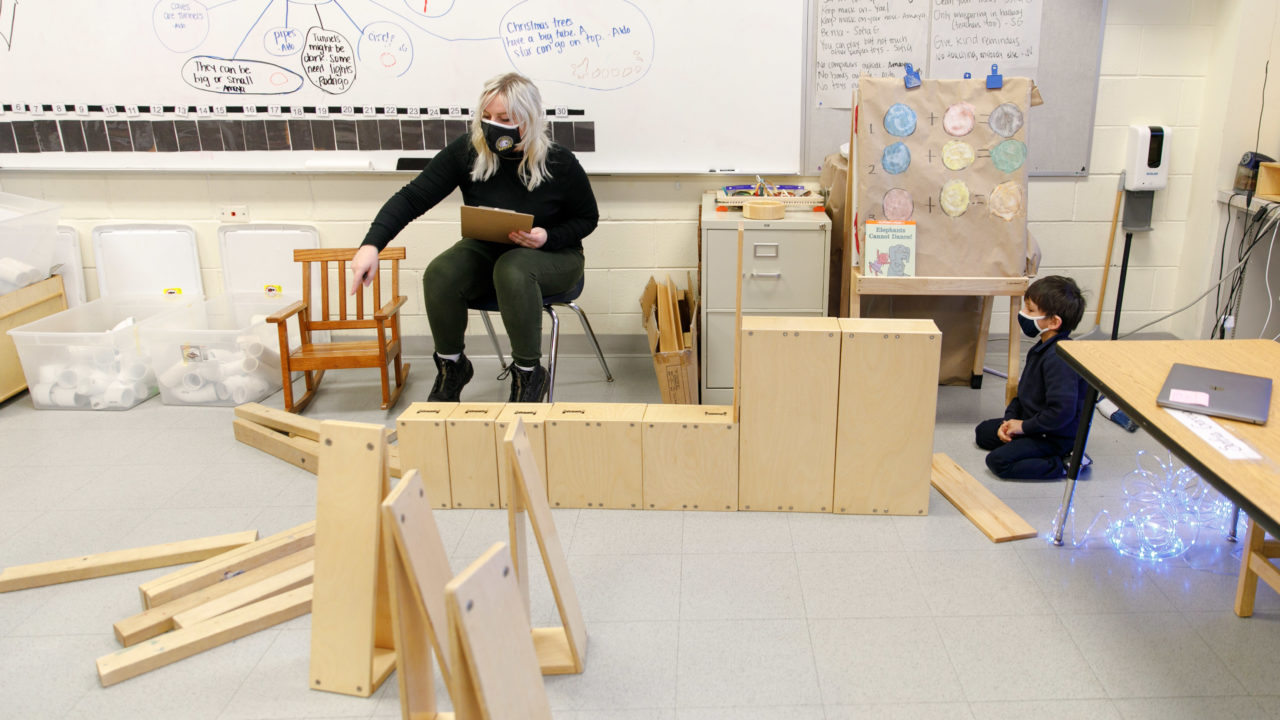
“One of the words I would use to describe my teaching style is constructivist. What that means is children are constructing their own learning and the teachers in the room are facilitating that,” said Ms. Faherty. “The first few weeks of school are about seeing where the students’ interests lie and figuring out how to incorporate math, literacy, science, gross motor skills, and making it relevant to them.”
A key part of helping this learning model work over the past year and for students who are continuing to learn at home has been allowing parents to pick up supplementary materials on a weekly basis. Sending materials home has also been important for Ms. Kendayl Loesch, who has spent her entire eight-year teaching career at New Field Elementary in Rogers Park.
Ms. Loesch teaches in a pre-k cluster program with diverse learners who need intensive support. In her classroom, providing families with sensory materials and other activities to create a repetitive and predictable environment is what is best to help her students stay engaged and enjoy learning.

“My students really thrive on having a consistent routine in a structured environment, so I was initially nervous about providing that over a computer without overstimulating them,” said Ms. Loesch. “But I think we’ve made great strides. I have to give so much credit to my parents. They put in so much energy to support their child at home.”
When she thinks about successes of the past year, something that almost immediately comes to mind for Ms. Loesch is how she was able to support a student who was having difficulty adjusting to remote learning. By collaborating with the student’s parents and the IEP team, she was able to suggest different strategies such as allowing the student to join the classroom from outside and making sure he was joining the classroom at a consistent time each morning. Now, she says he has come to enjoy learning so much that he is disappointed on weekends when there is no school.
Helping students grow is rooted in getting to know each of them personally. Ms. Loesch’s classroom—whether in person or virtually—focuses on music and movement. There is a song associated with nearly every piece of the daily routine, from talking about the weather to the days of the week to feeling happy or sad. While predictability is extremely important for her diverse learners, making small adjustments such as different four-week units (students are currently learning about animals) and small embellishments to her lesson plans based on student interests help them stay engaged.
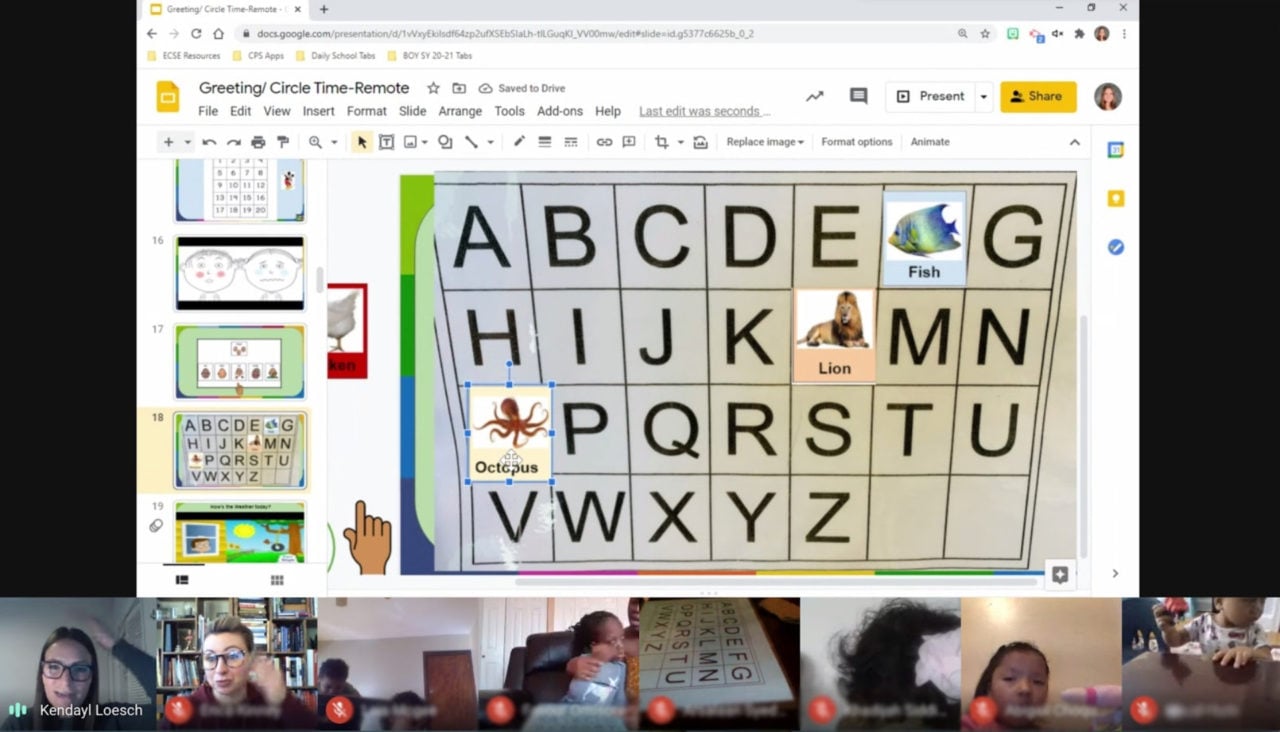
“One of my students was having a hard time focusing, and I noticed that she usually has her Mickey Mouse and Donald Duck dolls with her,” said Ms. Loesch. “So I incorporated Mickey Mouse’s voice when we would count from one to 20, and her face was right up to the screen and she was using her Mickey doll to point at the numbers.”

When returning to the classroom a few weeks ago, Ms. Faherty reflected on how remote learning reminded her that instruction does not always have to go according to plan. Part of her constructivist approach to learning is creating a democratic classroom through a dynamic classroom agreement—a list of rules created by the students that they update frequently throughout the school year. An extensive agreement wasn’t feasible in a remote setting, and she says that letting that go was hard.
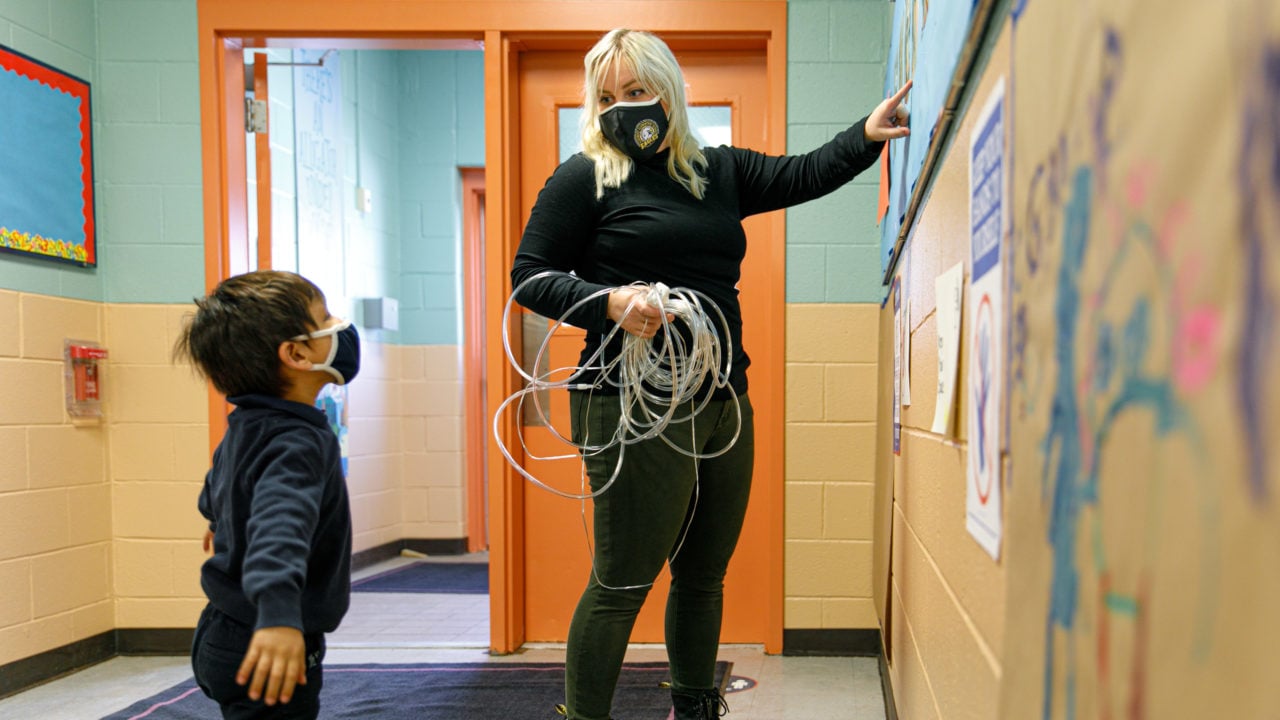
When returning to the classroom a few weeks ago, Ms. Faherty reflected on how remote learning reminded her that instruction does not always have to go according to plan. Part of her constructivist approach to learning is creating a democratic classroom through a dynamic classroom agreement—a list of rules created by the students that they update frequently throughout the school year. An extensive agreement wasn’t feasible in a remote setting, and she says that letting that go was hard.
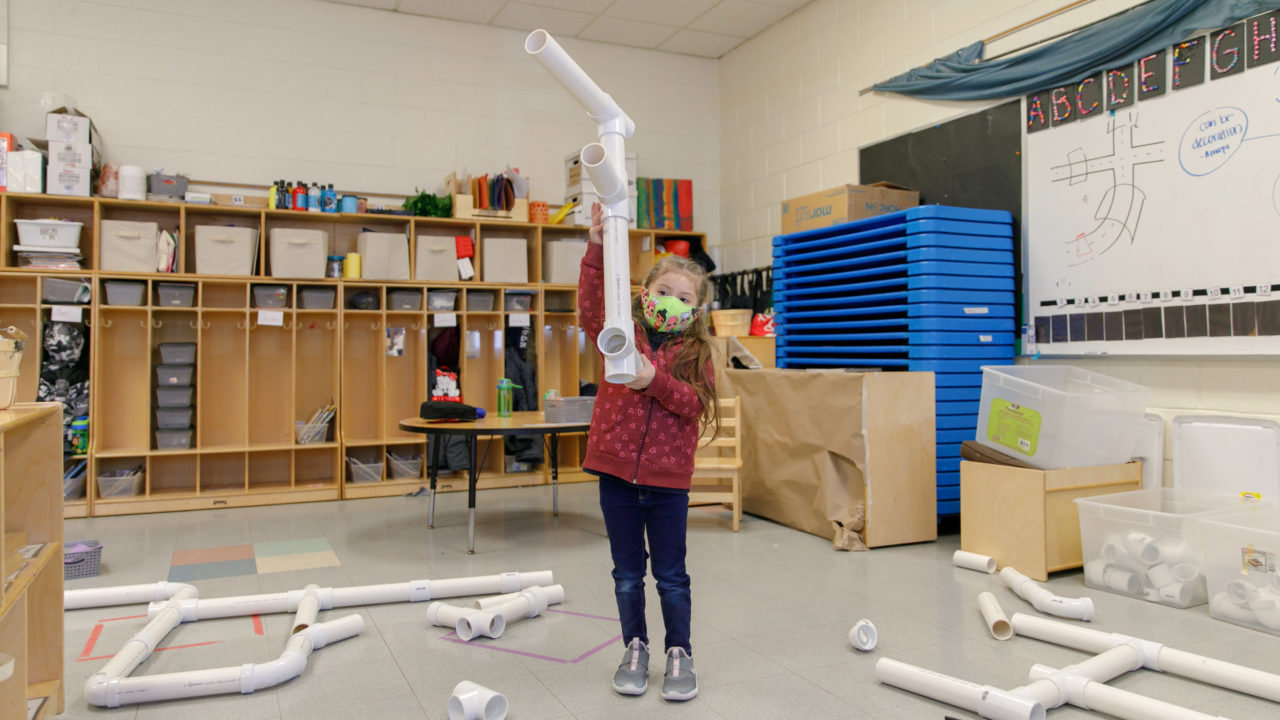
To commend their dedication to their students, Ms. Faherty and Ms. Loesch were recognized this year as Golden Apple finalists. Both of them are quick to point out that being acknowledged isn’t just a reflection of their own work, but it reflects the strong teams at both Schubert and New Field that drive student success—teachers, teaching assistants, support staff, administration, and parents. For Ms. Loesch, she even sees the honor as being for her students as well.
“I felt very proud to represent the population of students that I teach,” said Ms. Loesch. “Students in cluster programs aren’t always recognized for the progress they make or the effort they put in. The connections I make with my students continue way past my doors because I focus on being an advocate for them.”
And while she won’t deny that it has been a difficult and stressful year, Ms. Faherty sees Golden Apple as just the latest symbol of the joy she finds in being a teacher, a feeling she knows is shared by her colleagues in classrooms across Chicago.
“A year later and we’re just starting to get back to school. It’s important that our students know they can lean on us, but it’s also important to give ourselves the grace to make mistakes,” said Ms. Faherty. “I am so proud to be a teacher. Every teacher I know has put their whole heart and soul into this year.”
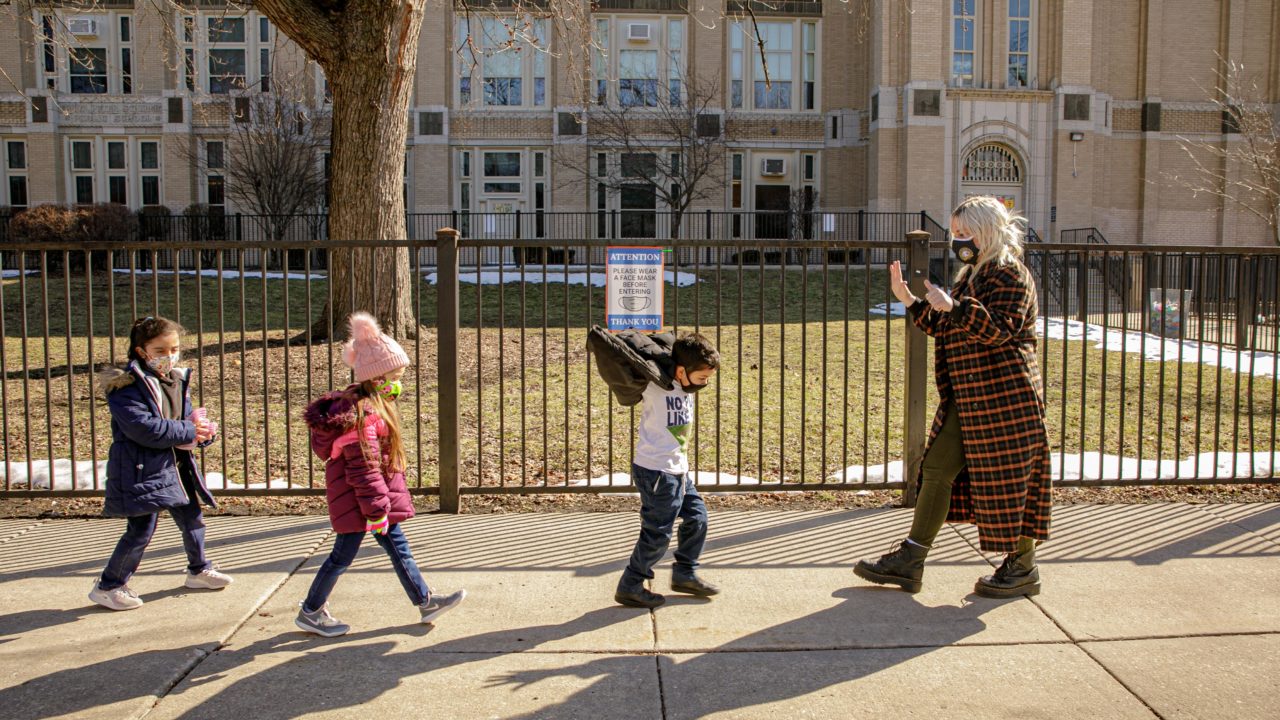
Related Stories
25 April 2025
Taking a Leap of Faith: First-Year AP Shares Her Journey to School Leadership
AP Jordan thrives in leading with compassion and love each and every day.
24 April 2025
Creating and Collaborating in Broadcasting Class: Take Five with Roderick Haygood
Before joining CPS, Mr. Haygood gained valuable on-the-ground experience working as a television and radio station supervisor.
23 April 2025
Making a Difference for Students with Disabilities
Ms. D'Vignon sees the importance of ensuring that her students receive a quality education and have a rightful presence in the classroom.
18 April 2025
Celebrating Mariachi in Music Class: Take Five with Phillip Olazaba
Mr. Olazaba is known for being a caring teacher who has high expectations while still making learning fun.




